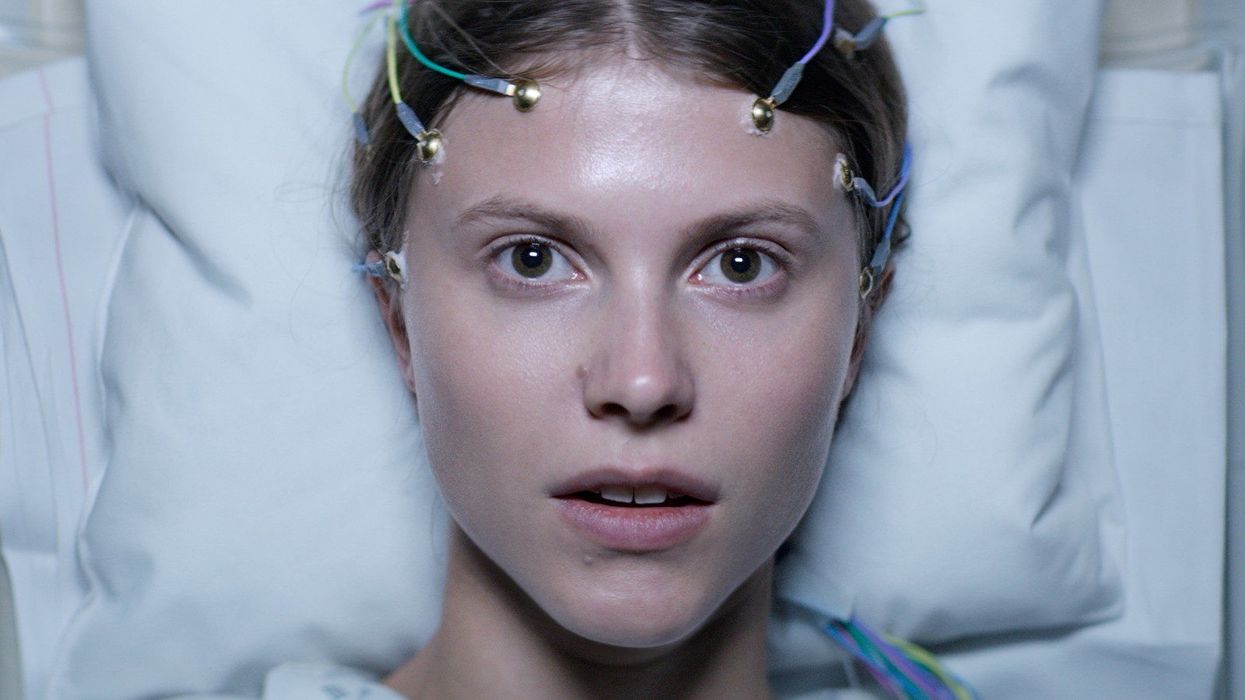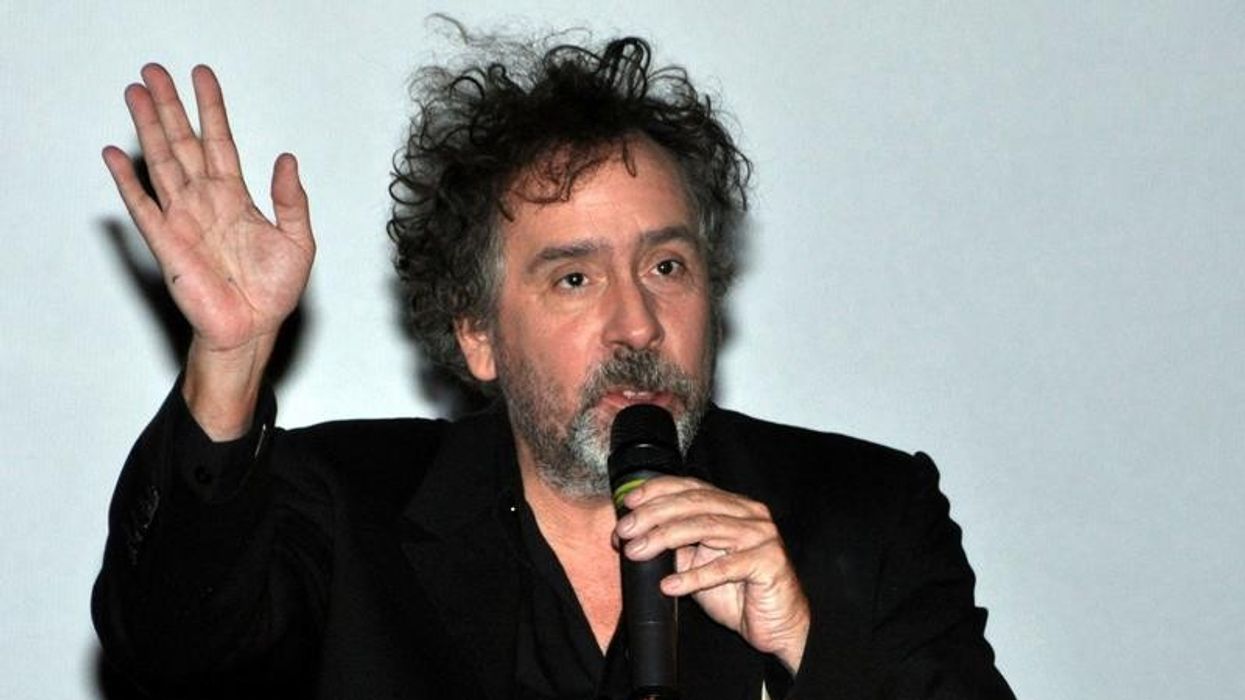'Thelma': Joachim Trier on Shooting the Norwegian 'Carrie' on Cinemascope
Joachim Trier's erotic 'Thelma' combines Hollywood spectacle with character-driven nuance.

When we interviewed Joachim Trier last year about his film Louder than Bombs, we wrote that the Norwegian auteur has the ability to transcend cinema by infusing naturalism with deep poetry. Now, he's taken things one step further.
The beguiling Thelma, in theaters now, is unlike any of Trier's previous films. Trier told No Film School he built his story from grandiose set pieces in order to bring his character-driven approach to a Hollywood spectacle. The result is a nuanced coming-of-age superhero story told with a distinctly psychosexual, Ingmar Bergman feel. Eili Harboe stars as the titular Thelma, a reticent college freshman who was raised by an overprotective, religious family. When she moves to Oslo to start school, she develops a strong and unwelcome attraction to a female classmate. But, as Thelma will soon discover, she cannot resist her desires—she harbors a mysterious telekinetic power that answers to her innermost wishes, for better or for worse.
"We wanted to try to combine a spectacular visual set piece movie with existential depth and character-driven storytelling."
NFS sat down with Trier to discuss the challenges of shooting on Cinemascope, why the industry expects filmmakers to "do the same thing over and over again," and the advantages of having 200 CGI shots in your movie.
No Film School: This is your fourth feature film. How was the process of getting this one off the ground?
Joachim Trier: With this one, it was not so bad. I already had some support from the Norwegian Film Institute, which is government funding, and we got something from the Danish and Swedish Film Institutes as well. We got Eurimages, which is a European financing [support fund]. Also, local distributors that have distributed my previous work came in and bought the film [before production] because they liked the script so much. And France has been a very important country in terms of supporting my work—we got money from a wonderful distributor and sales agent in France.
"The visual would feed into the writing."
I think a lot of people were divided on Thelma. Many people thought it was exciting that I was trying to do a supernatural-type story that was different from the things I've done in the past, but also, some people were very worried. There are always some people that want you to do the same thing over and over again, but for us, it was very important to get involved with people that wanted us to move on and to allow us to explore a different aesthetic.
NFS: Thelma definitely is a departure for you. It's hyper-stylized, whereas your other work is more naturalistic. Can you talk a little bit about executing the visually complex scenes?
Trier: We have 200 CGI shots in the film. There are lots of special effects and visual effects, so we had to storyboard much more. Jakob Ihre and a wonderful Danish storyboard artist and I sat in a room while we were writing the script. I was actually able to draw out a lot of the set pieces and then bring that to Eskil [Vogt], who was writing the script. The visual would feed into the writing as well, so that was a new experience.
It was necessary to [plan ahead] because we needed very special locations. We shot in some big, snowy lakes with ice. We're in the Oslo Opera House, where we have limited time. We have people catching fire. These things need to be planned ahead, and also to be budgeted. To be achieved at all, you really need to know what you're doing. But it was exciting to start visually so early in the process.
"We have 200 CGI shots in the film."
NFS: Which lenses and camera did you shoot Thelma on? Did you have to change your visual language to accommodate this new aesthetic framework?
Trier: We shot this with Cinemascope lenses. I hadn't used that wide format before. They're very difficult lenses to work with. I tried to combine these big, spacious shots—where Cinemascope works very well—with these incredibly tight and intimate moments. I wanted that tension to create a dynamic language.
Close-ups on scope are very difficult. Because of the depth of field, you need space between the camera and the characters, or you need to change lenses. Thankfully, we had an amazing Swedish cinematographer, Jakob Ihre. He brought with him an amazing grip and light team. Also, David Regan was an American focus puller that we worked with. He does a lot of the Jeff Nichols' movies.
I did need to learn a new language with these huge scope lenses—the Cooke lenses—that we used. But it was fun, and it forced us to make different choices and to grow. That's always healthy, not to do the same thing.

Trier: [Eskil and I both] feel that movies are at a point now when Hollywood is taking over the movie theaters with a lot of spectacle films, and not all of those are thematically interesting. We wanted to try to combine a spectacular visual set piece type of movie with more existential depth and character-driven storytelling. So Thelma is both an intimate drama about a young woman trying to gain autonomy from her parents and accepting her love for another girl, combined with a spectacle that has big, spacious set pieces. I wanted to see if they could gel together to form a story. That was the visual challenge and the fun with this one.
NFS: Casting Thelma was probably a difficult process because there was a lot you were asking from the actress—a lot of complexity you needed to portray. How did you know you found the right actress in Eili Harboe?
Trier: Yeah, well, that's a good question. Casting feels almost impossible every time, and then suddenly becomes easy when a person like Eili Harboe walks into the room.
We met several hundred people. I was aware of her, but we met her pretty late in the process. I was looking forward to it because I'd seen her do some smaller parts before, but when she came in, it became very apparent that she was Thelma. She has an incredible ability to both do very subtle acting, a very natural talent with naturalist performing, and then, at the same time, she's very brave. We knew that, for this part, we needed someone who could also be on the water and act with real snakes in very extreme emotions. She's very generous with other actors. Very dynamic with her work method. After we found her, the rest just fell into place.












